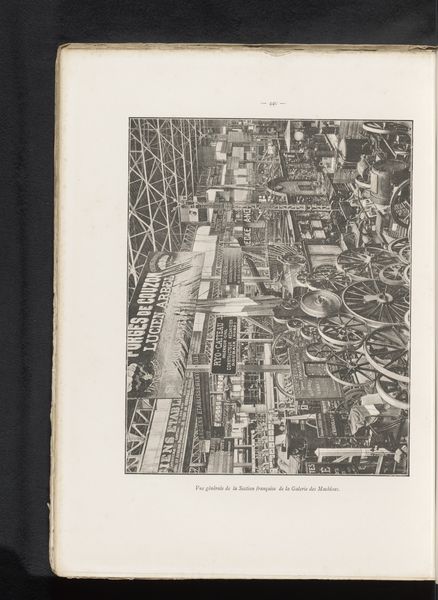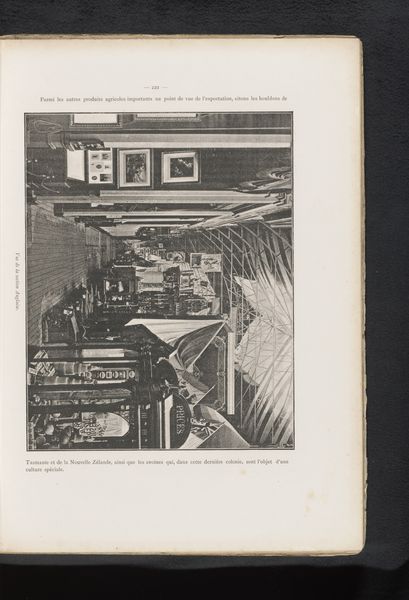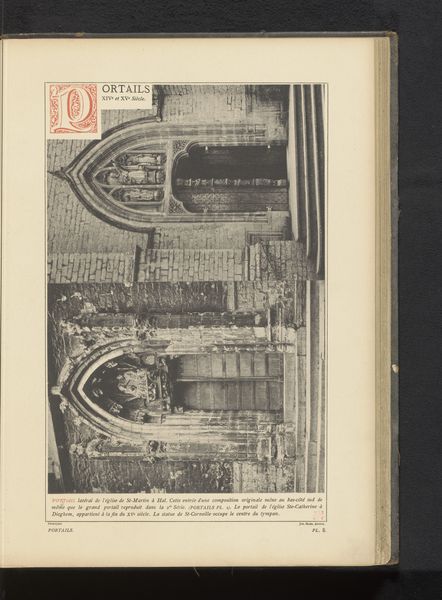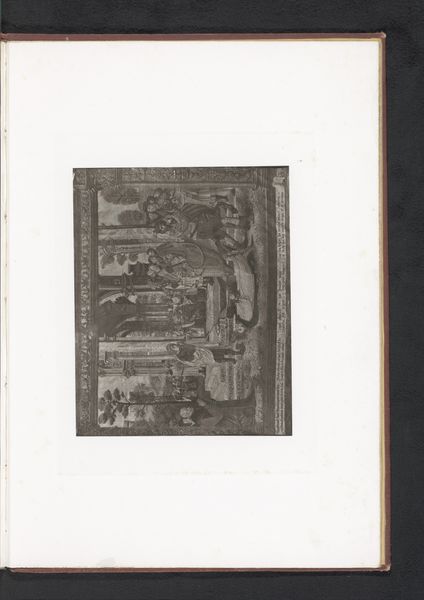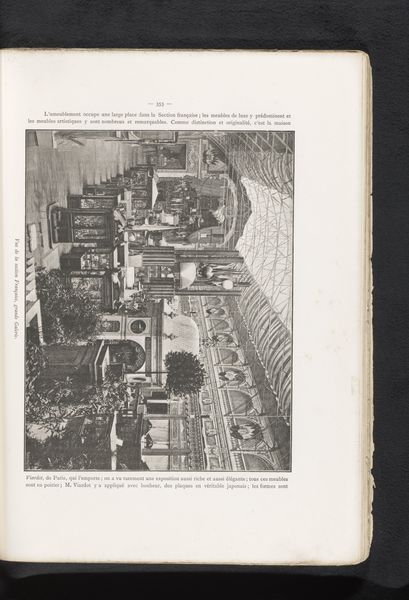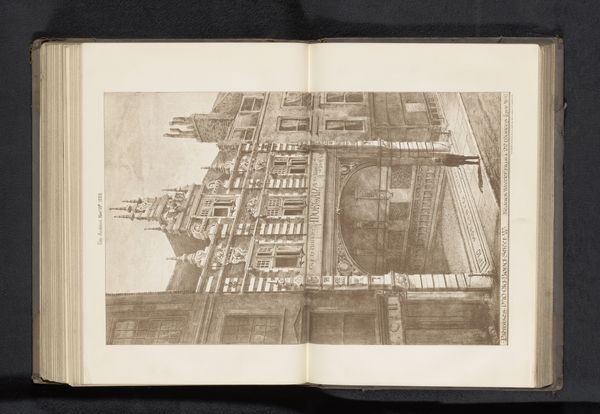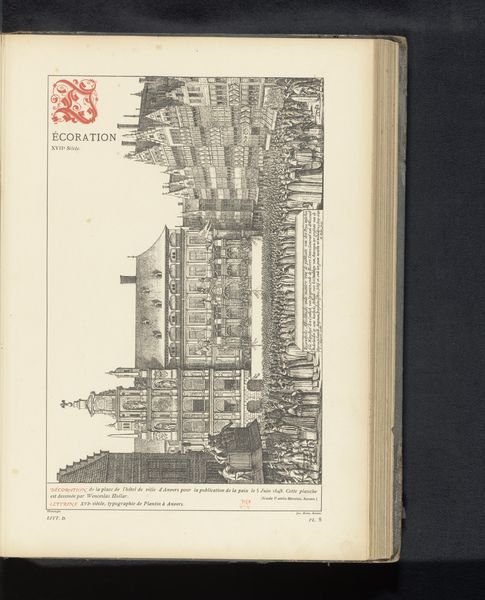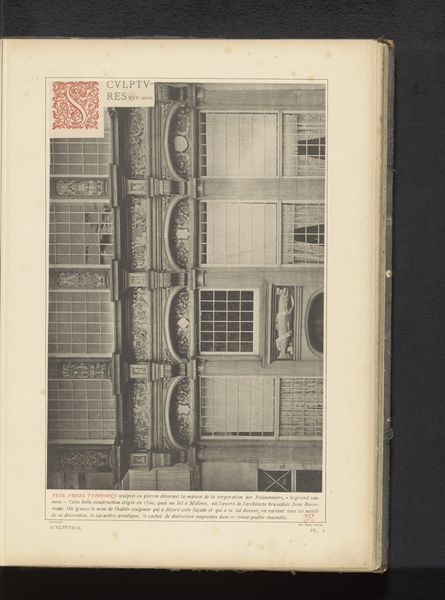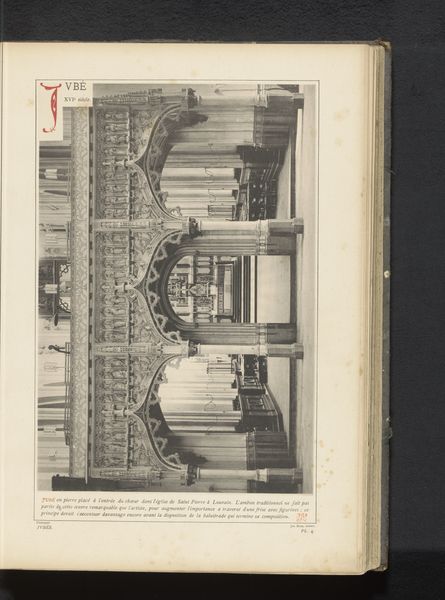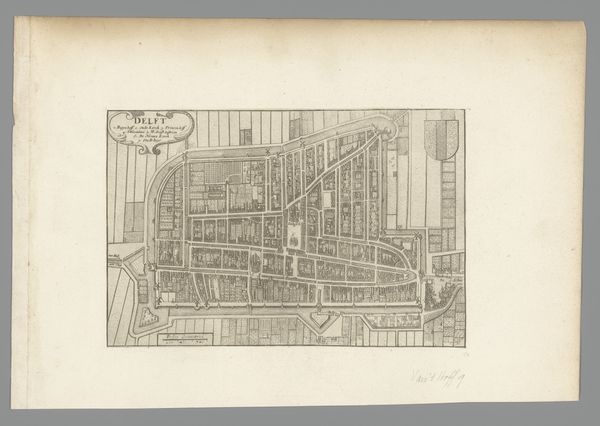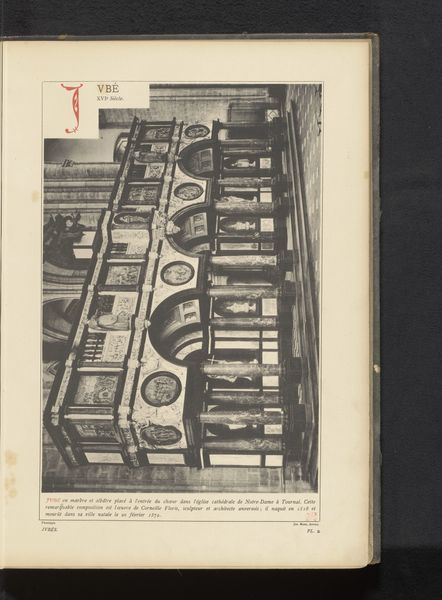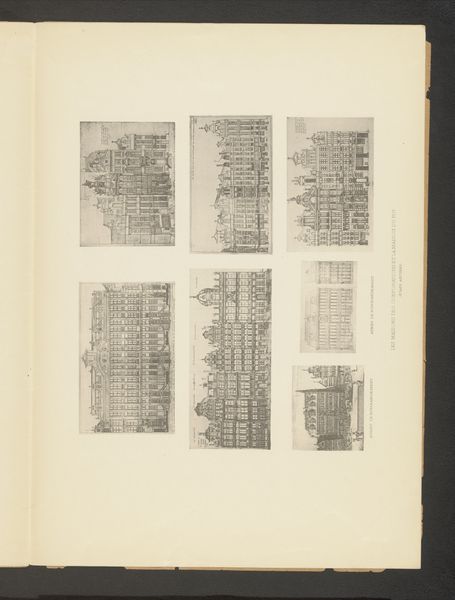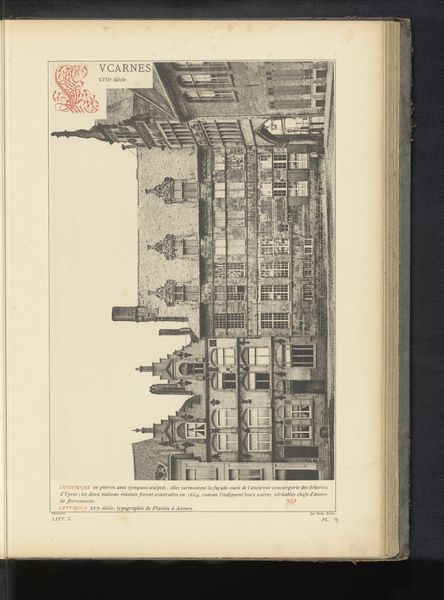
Gezicht op de galerij met machines op de Wereldtentoonstelling van 1885 in Antwerpen before 1885
0:00
0:00
print, photography
# print
#
photography
#
realism
Dimensions: height 219 mm, width 272 mm
Copyright: Rijks Museum: Open Domain
Curator: This rather captivating print, titled "Gezicht op de galerij met machines op de Wereldtentoonstelling van 1885 in Antwerpen," presents an interior view from the World's Fair in Antwerp. It seems to integrate photography somehow, perhaps in its reproduction, which emphasizes realism in its capture of industrial machinery. Editor: My initial reaction is of immense scale. It feels overwhelmingly complex and chaotic. I'm immediately drawn to the intricate, almost claustrophobic network of structures and machines that symbolize both progress and potential dehumanization. Curator: Indeed, note the density of line and form. Observe how the artist structures the visual field through layered planes, creating depth while also flattening the image through the sheer accumulation of detail. Semiotically, this overloading could be read as the artist’s statement about the machine age itself. Editor: But what kind of a statement? It's critical to consider the politics inherent to world expositions. Who benefits from such spectacles? I can see a network of advertising, proclaiming manufacturers: “Denaeyer & C,” “Éclairage Électrique Joseph Jaspar”. This image actively participates in celebrating and cementing the dominant industrial and capitalist forces. Curator: An astute observation. The emphasis on visual depth might serve the exposition’s self-image: to demonstrate modernity through three-dimensional space—while nonetheless producing a disorienting effect. Look how even the text functions in this field—less for conveying immediate information than contributing to the surface dynamism. Editor: Precisely. This visual layering creates an experience bordering on sensory overload, subtly mirroring the accelerated pace of industrial society. It’s easy to miss, amidst the grandeur, the absence of the human labor force actually operating this machinery. They’re present only as invisible components. This absence should spark more critical reflections on social hierarchies during that era. Curator: An important point. As a formal exercise, however, the photograph-print is particularly striking for its articulation of depth. The way the structural steel lattice overlays the deeper, implied space of the hall itself—that tension creates, formally, its own dynamic relationship. Editor: Still, acknowledging its formal complexity, we mustn't lose sight of its broader societal impact. This is more than just clever image-making. The work embodies and propels a specific ideology around industrial progress and consumption, which inevitably produces a socio-economic ripple effect of inequality that lingers still. Curator: Thank you for adding this essential cultural context. Approaching an artwork, such as this "View of the Machinery Gallery", with awareness of historical forces can broaden how we examine this dense, fascinating construction. Editor: By incorporating an intersectional narrative—looking at race, class, and labor relations alongside more standard aesthetics—we see how one complex photograph-print reflects both artistic creation and society’s deeply-rooted structures.
Comments
No comments
Be the first to comment and join the conversation on the ultimate creative platform.
